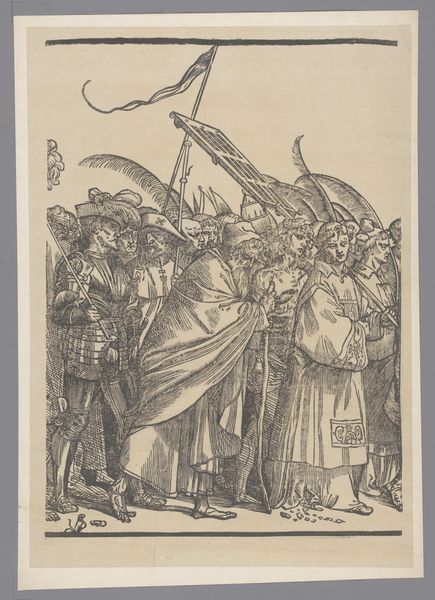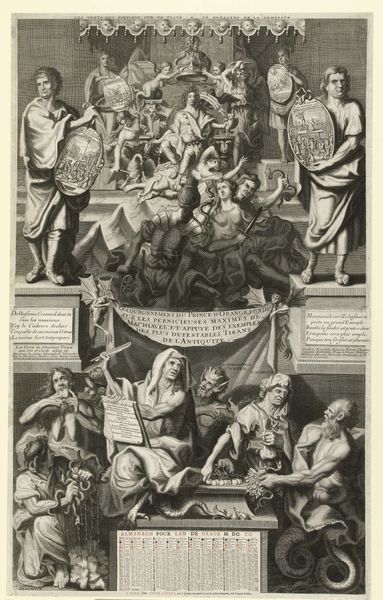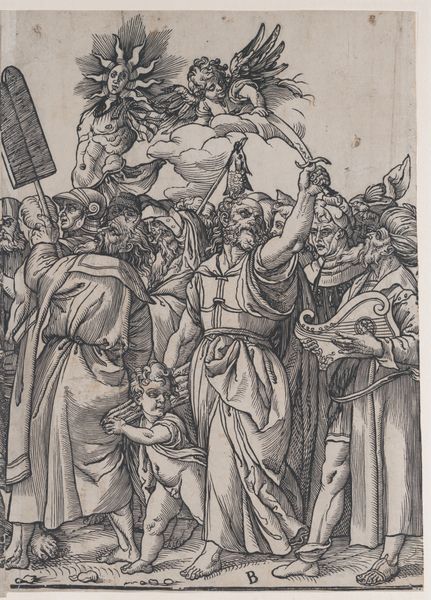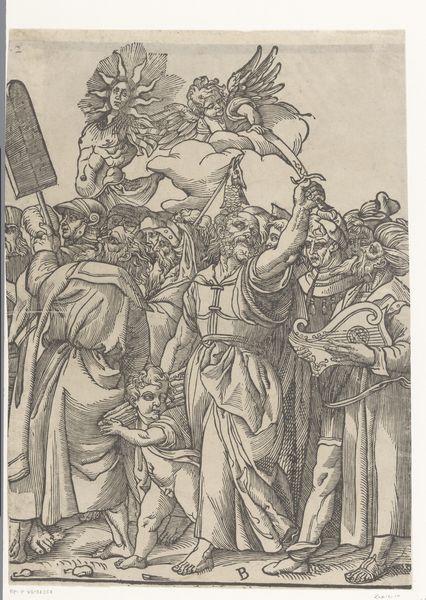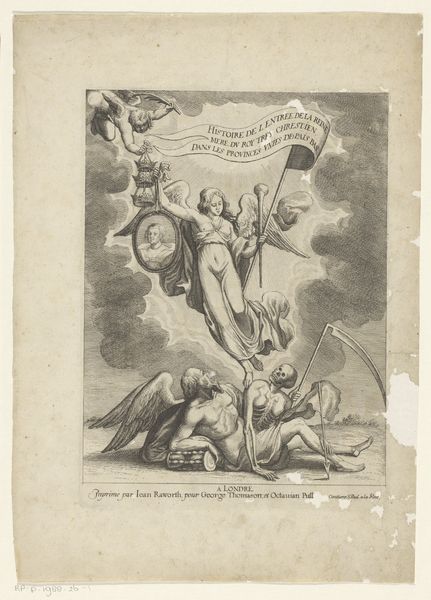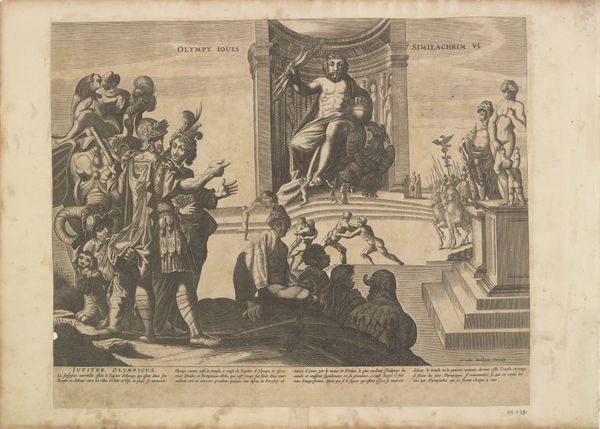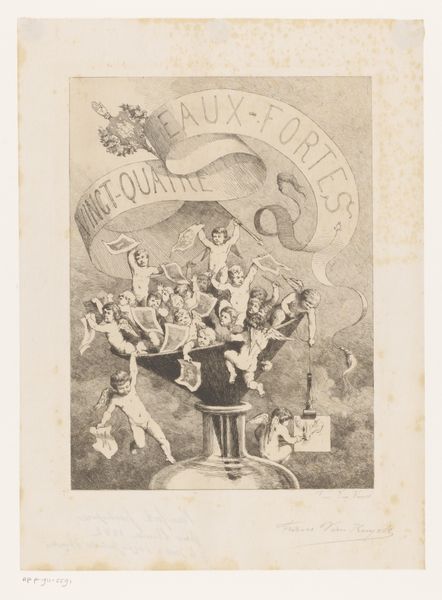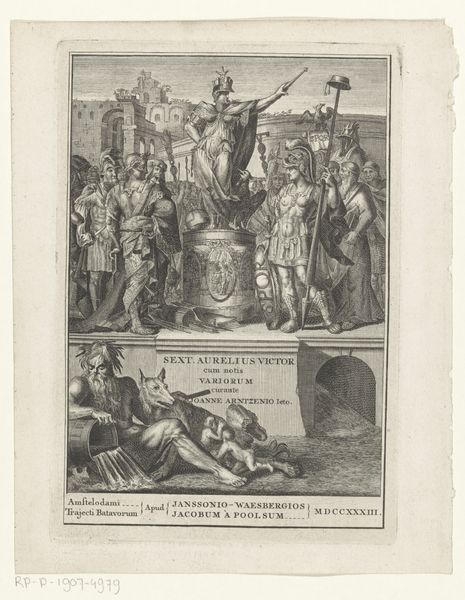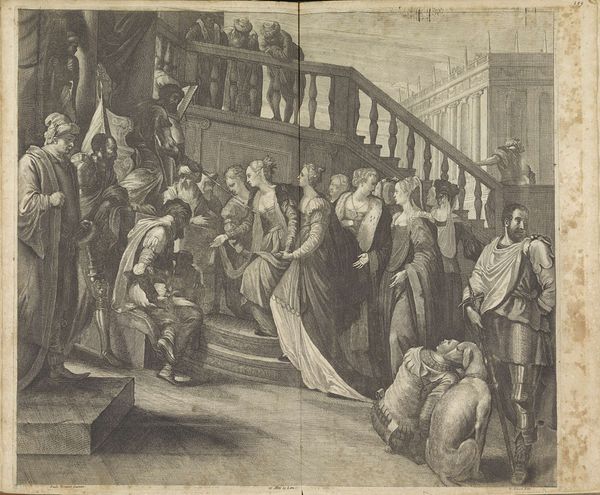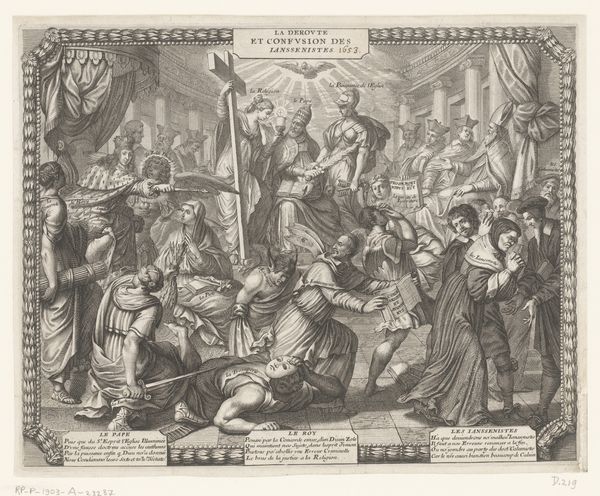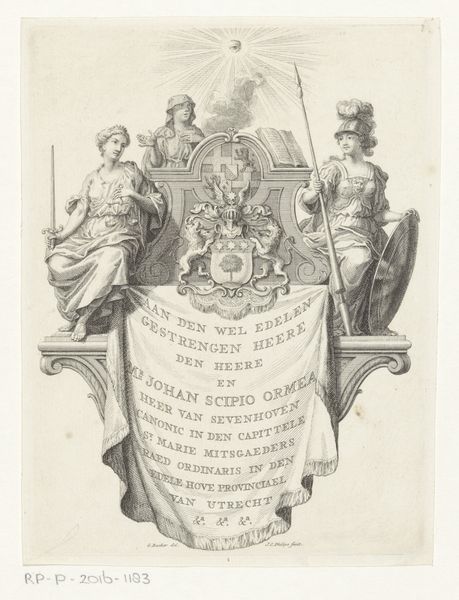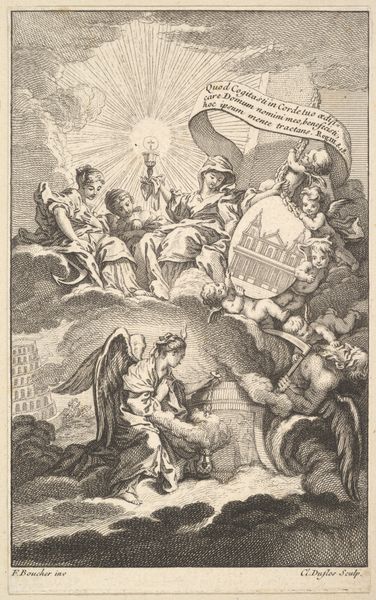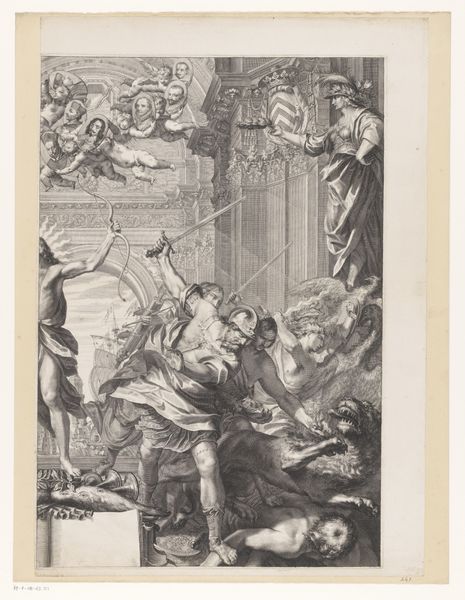
Triomftocht van Christus met figuren uit het Oude en Nieuwe Testament (derde deel) 1687 - 1694
0:00
0:00
nicolasdeilarmessin
Rijksmuseum
print, engraving
#
narrative-art
#
baroque
# print
#
figuration
#
history-painting
#
engraving
Dimensions: height 676 mm, width 509 mm
Copyright: Rijks Museum: Open Domain
Editor: Here we have "The Triumph of Christ with Figures from the Old and New Testament (part three)" by Nicolas de Larmessin, created between 1687 and 1694. It's an engraving. There are all these figures holding banners… they seem almost like protestors from another century. The color is added, a touch of watercolor, perhaps. It strikes me as…unsettling, yet organized. What do you see in this piece? Curator: Unsettling, yes, that captures a piece of it, doesn't it? I am struck by how de Larmessin brings together these seemingly disparate figures, specifically the sibyls of antiquity with the triumph of Christ. It is unexpected. What do those women carrying banners signify, do you think? Consider the political and religious climate of the time… It feels almost…subversive, perhaps? Are those subtle jokes being told in the work? Editor: Well, each banner seems to identify the women, labeling them the "Sibyl of Cumae", "Sibyl of Samos", and so forth. The text does make me think that they were protestors holding those banners! Is that an inaccurate interpretation? Curator: No, not at all! I would imagine that's exactly how they saw themselves within this context - that the message from ancient figures aligns with their protest and cause. Note the somewhat staged expressions; do you get a sense of artificiality? The artist had some ideas, let’s be fair, and it’s fascinating to wonder. I’d say it’s all a mix of genuine religious sentiment with the controlled spectacle of power. I am being challenged myself! Editor: It definitely shifts my understanding. I initially saw them as figures in isolation, but the socio-political context changes the message. Curator: Exactly. And that tension, that unease, is precisely where the art resides, wouldn't you agree? Now go off and make someone *else* uneasy, too.
Comments
No comments
Be the first to comment and join the conversation on the ultimate creative platform.
